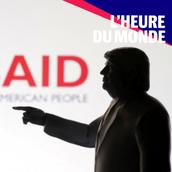US cuts to foreign aid could cause more than 14 million deaths by 2030
Drastic budget cuts to international development aid by the Trump administration could lead to more than 14 million additional deaths by 2030 among the most vulnerable, a third of them children, according to a projection published Tuesday, July 1, in The Lancet .
"They risk abruptly interrupting, or even reversing, two decades of progress in the health of vulnerable populations. For many low- and middle-income countries, the resulting shock would be of a magnitude comparable to that of a global pandemic or a major armed conflict," commented Davide Rasella, co-author of the study and researcher at the Barcelona Institute for Global Health, quoted in a press release.
The publication of this study in the medical journal coincides with a conference on development financing in Spain bringing together world leaders, with the United States among those absent. This meeting is taking place in a particularly bleak context for development aid, hit by the massive funding cuts implemented by Donald Trump since his return to the White House in January.
Preventable diseasesExamining data from 133 countries, the international team of researchers retrospectively estimated that USAID-funded programs prevented 91 million deaths in low- and middle-income countries between 2001 and 2021.
And, according to their modeling, the 83% cut in U.S. funding—a figure announced by the government in early 2025—could lead to more than 14 million additional deaths by 2030, including more than 4.5 million children under age 5, or about 700,000 additional child deaths per year.
Because USAID-supported programs were linked to a 15% reduction in deaths from all causes, the researchers calculated. For children under 5, the decline in deaths was twice as large (32%). The greatest impact of this aid was observed for preventable diseases. Mortality from HIV/AIDS was reduced by 74%, malaria by 53%, and neglected tropical diseases by 51% in countries receiving the highest level of aid compared to those with little or no USAID funding, according to the study.
European budget cutsAnother source of concern: other major international donors, mainly European, such as Germany, Great Britain and France, have also announced cuts to their foreign aid budgets in the wake of the United States. This risks "leading to even more deaths in the years to come," warned Caterina Monti, another co-author of the study, a researcher at ISGlobal.
Some fifty heads of state and government—including French President Emmanuel Macron and European Commission President Ursula von der Leyen—are participating in the four-day Financing for Development Conference in Seville, alongside 4,000 civil society representatives. "This is the time to increase, not reduce," aid, Davide Rasella argued.
Before the cut in its funding, USAID represented 0.3% of U.S. federal spending. "American citizens pay about 17 cents a day to USAID, or about $64 a year. I think most people would support continued funding for USAID if they knew how effective such a small contribution can be in saving millions of lives," said James Macinko, co-author of the study and professor at the University of California (UCLA).

The World with AFP
Contribute
Reuse this content



